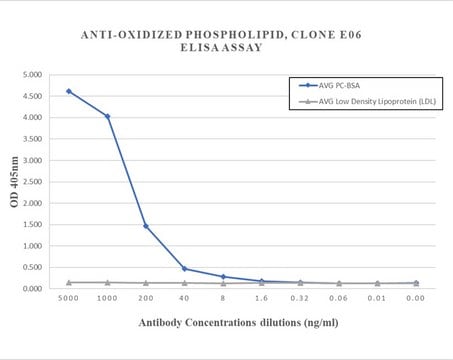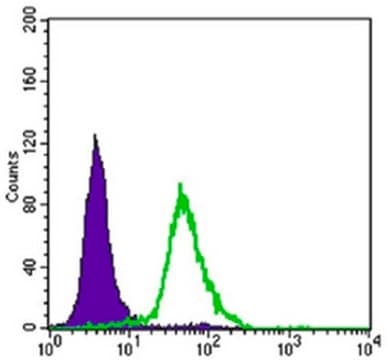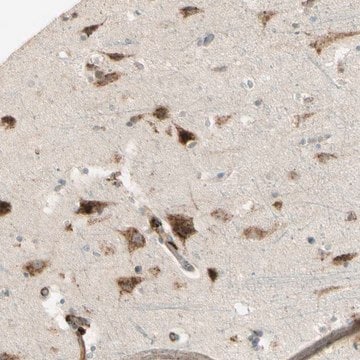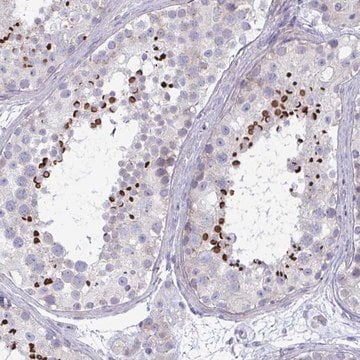330001S
Avanti
E06 mAb
E06 Mouse Monoclonal Antibody (IgM), Anti-(Oxidized Phospholipid), 1X PBS (Phosphate Buffered Saline) with 0.27 mM Na2 EDTA
Sinónimos:
E06 mAb, T15 antibody
Seleccione un Tamaño
Seleccione un Tamaño
About This Item
Productos recomendados
forma del anticuerpo
purified from hybridoma cell culture
tipo de anticuerpo
primary antibodies
Ensayo
>95%
Formulario
solution
envase
pkg of 1 × 0.1 mL (polypropylene tube with screw cap (330001S-100ug))
fabricante / nombre comercial
Avanti Research™ - A Croda Brand 330001S
concentración
1 mg/mL (330001S-100ug)
Condiciones de envío
dry ice
temp. de almacenamiento
−70°C
Descripción general
Aplicación
Envase
Información legal
¿No encuentra el producto adecuado?
Pruebe nuestro Herramienta de selección de productos.
Código de clase de almacenamiento
12 - Non Combustible Liquids
Clase de riesgo para el agua (WGK)
nwg
Punto de inflamabilidad (°F)
Not applicable
Punto de inflamabilidad (°C)
Not applicable
Elija entre una de las versiones más recientes:
Certificados de análisis (COA)
It looks like we've run into a problem, but you can still download Certificates of Analysis from our Documentos section.
Si necesita más asistencia, póngase en contacto con Atención al cliente
¿Ya tiene este producto?
Encuentre la documentación para los productos que ha comprado recientemente en la Biblioteca de documentos.
Nuestro equipo de científicos tiene experiencia en todas las áreas de investigación: Ciencias de la vida, Ciencia de los materiales, Síntesis química, Cromatografía, Analítica y muchas otras.
Póngase en contacto con el Servicio técnico


![[1,1′-Bis(diphenylphosphino)ferrocene]dichloropalladium(II)](/deepweb/assets/sigmaaldrich/product/structures/130/734/8846aa26-1858-458a-998d-8c306c13bf0f/640/8846aa26-1858-458a-998d-8c306c13bf0f.png)

![[Pd(OAc)2]3 reagent grade, 98%](/deepweb/assets/sigmaaldrich/product/structures/508/249/99a0ef2c-b77c-4d73-8ed9-0cca05b6b41f/640/99a0ef2c-b77c-4d73-8ed9-0cca05b6b41f.png)



